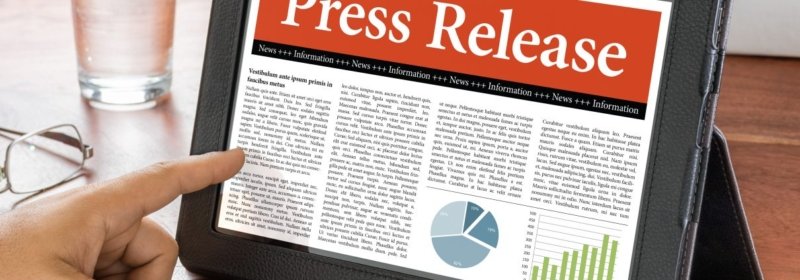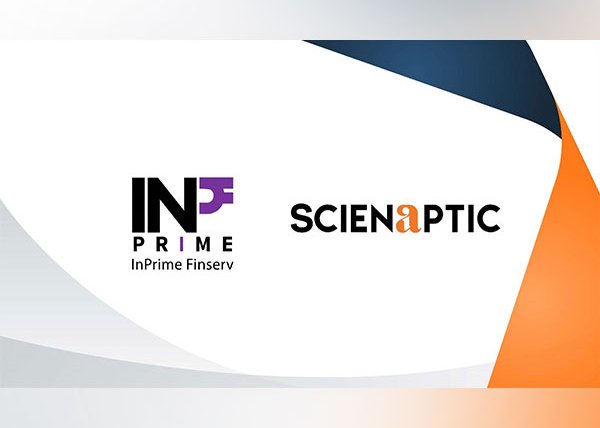In the world of public relations, crafting a compelling press release is only the first step. The real challenge lies in ensuring that your carefully written release reaches the right audience and achieves the intended impact. Distribution is a critical element of this process, and without a well-thought-out strategy, even the most newsworthy press release can fall flat.
With the media landscape becoming increasingly fragmented, it’s essential to use a multifaceted approach to press release distribution. This article explores effective distribution strategies that can maximize the reach and impact of your press release, ensuring that your news gets the attention it deserves.
Identifying Your Target Audience
The foundation of any successful press release distribution strategy is a deep understanding of your target audience. Before you decide where and how to distribute your press release, you must first identify who you want to reach. This understanding will guide your choice of distribution channels, timing, and even the content of your release.
Ask yourself: Who is most likely to be interested in this news? Are you targeting industry professionals, general consumers, or the media? What are the key demographics of your audience—age, location, industry, or interests? By answering these questions, you can tailor your distribution strategy to ensure your press release reaches those who matter most.
For example, if you’re launching a new tech product, your target audience might include tech journalists, industry analysts, and tech-savvy consumers. In this case, tech blogs, industry publications, and social media platforms like LinkedIn and Twitter would be ideal channels for distribution.
Understanding your audience also helps in crafting the press release itself. The tone, language, and key messages should resonate with your audience’s needs and interests, increasing the likelihood that your press release will be picked up and shared.
Choosing the Right Distribution Channels
Once you’ve identified your target audience, the next step is to choose the right distribution channels. With the proliferation of digital media, the options for distributing press releases have expanded significantly. However, not all channels are created equal, and choosing the wrong one can mean your press release goes unnoticed.
Here are some key distribution channels to consider:
- Newswires: Traditional newswires like PR Newswire, Business Wire, and GlobeNewswire remain valuable tools for distributing press releases. These services distribute your release to a wide range of media outlets, journalists, and newsrooms, offering broad coverage. They are particularly useful for major announcements that require extensive reach.
- Direct Outreach to Journalists: Building relationships with journalists in your industry can significantly increase the chances of your press release being picked up. By sending your press release directly to journalists who cover your industry or beat, you can ensure it lands in the hands of those most likely to be interested.
- Email Distribution: Email is still one of the most effective ways to distribute press releases. Whether you’re reaching out to journalists, industry influencers, or your own media list, a well-crafted email can lead to valuable coverage. Make sure your email subject line is compelling and that the body of the email is concise, highlighting the key points of your release.
- Social Media: Social media platforms offer a powerful way to amplify your press release. Platforms like Twitter, LinkedIn, and Facebook can help you reach a broader audience and encourage sharing. Social media also allows for real-time engagement, enabling you to interact with your audience directly.
- Industry Blogs and Websites: If your press release is highly relevant to a specific industry, consider reaching out to industry blogs and websites. These niche platforms can be highly effective in reaching a targeted audience that is already interested in your news.
- Company Website and Blog: Don’t forget to publish your press release on your company’s website and blog. This not only provides a central location for your press release but also improves your site’s SEO, driving more organic traffic.
Each of these channels has its strengths, and the best approach often involves a combination of several. For instance, you might distribute your press release via a newswire, while also reaching out directly to key journalists and sharing the news on social media.
The Role of Newswires
Newswires have been a staple of press release distribution for decades, and they continue to play a crucial role in getting your news out to a wide audience. However, with the rise of digital media, the way newswires are used has evolved.
Today, newswires distribute press releases not only to traditional media outlets but also to digital platforms, industry websites, and even directly to consumers through syndication on high-traffic news sites. This broad reach makes newswires an essential tool for large-scale announcements or when you need to ensure your news reaches as many people as possible.
However, it’s important to use newswires strategically. While they offer extensive reach, they can also be expensive, so it’s crucial to assess whether the potential return on investment justifies the cost. For smaller, more niche announcements, direct outreach or targeted digital channels might offer better value.
Direct Outreach to Journalists
Direct outreach to journalists remains one of the most effective ways to secure media coverage for your press release. Journalists receive hundreds of press releases daily, so building a relationship and personalizing your outreach can make a significant difference.
When reaching out to journalists, it’s essential to do your homework. Identify the journalists who cover your industry or the specific topic of your press release. Tailor your message to each journalist, highlighting why your press release is relevant to their beat. A personalized email that shows you’ve taken the time to understand the journalist’s work is far more likely to result in coverage than a generic, mass-distributed release.
Additionally, provide journalists with everything they need to cover your story. This includes high-quality images, videos, quotes from key stakeholders, and any other relevant materials. The easier you make it for journalists to write about your news, the more likely they are to do so.
Utilizing Social Media
In today’s digital landscape, social media is a powerful tool for press release distribution. Platforms like Twitter, LinkedIn, and Facebook allow you to share your press release with a broader audience and encourage engagement through likes, shares, and comments.
When using social media to distribute your press release, it’s important to tailor your approach to each platform. For example, Twitter is great for short, snappy updates and real-time engagement, while LinkedIn is more suited to professional, industry-focused content. Facebook can be used for a mix of both, depending on your audience.
Visual content is particularly important on social media. Accompany your press release with engaging images, videos, or infographics to increase its shareability. Additionally, use hashtags strategically to increase the visibility of your post and reach a wider audience.
Another effective strategy is to tag relevant influencers, journalists, and industry leaders in your posts. This can increase the chances of your press release being noticed and shared by people with large followings, amplifying your reach.
Email Distribution
Email remains one of the most reliable and effective channels for press release distribution. Whether you’re sending your press release to a curated list of journalists, industry influencers, or your own subscribers, a well-crafted email can drive significant engagement.
To maximize the effectiveness of your email distribution, start with a compelling subject line that grabs the recipient’s attention. The subject line should be concise, to the point, and clearly convey the newsworthiness of your press release.
In the body of the email, keep the content brief and focused. Highlight the key points of your press release, and include a link to the full release on your website. Providing additional resources such as high-resolution images, videos, or links to related content can also be beneficial.
Personalization is key when sending emails to journalists or influencers. Mention why your press release is relevant to their audience and how it aligns with their interests. This personalized approach can increase the likelihood of your press release being picked up.
The Importance of Timing
The timing of your press release distribution can significantly impact its success. Even the most compelling press release can go unnoticed if it’s released at the wrong time. Timing your distribution strategically can increase the chances of your press release being seen, shared, and covered by the media.
Here are some tips for timing your press release distribution:
- Best Days to Distribute: Research suggests that the best days to send press releases are Tuesday, Wednesday, and Thursday. These days tend to be less hectic for journalists, increasing the likelihood that your press release will be noticed.
- Time of Day: Aim to distribute your press release in the morning, between 8:00 AM and 10:00 AM. This gives journalists time to review your release during the workday and decide whether to cover it.
- Avoid Busy News Days: Be mindful of major events, holidays, or industry conferences that might dominate the news cycle. If your press release is not time-sensitive, consider waiting for a day when there’s less competition for media attention.
- Industry-Specific Timing: If your press release is tied to a specific industry, consider timing it to coincide with relevant events, such as trade shows, industry conferences, or key financial reporting dates.
By carefully timing your press release, you can maximize its impact and ensure it reaches your audience when they are most receptive.
Measuring Success
After distributing your press release, it’s essential to measure its success to understand its impact and refine your future strategies. Here are some key metrics to track:
- Media Pickups: Track how many media outlets picked up your press release and whether it was featured prominently. Tools like Google Alerts or media monitoring services can help you keep track of mentions.
- Website Traffic: Analyze the traffic to your website following the distribution of your press release. Tools like Google Analytics can show you how much traffic was generated by your press release and which channels were most effective.
- Social Media Engagement: Monitor social media platforms for mentions, shares, and comments related to your press release. High levels of engagement indicate that your press release resonated with your audience.
- Email Open and Click-Through Rates: If you distributed your press release via email, track the open and click-through rates. These metrics provide insight into how effectively your email captured the recipient’s attention and drove them to take action.
- SEO Impact: Check whether your press release improved your website’s SEO by analyzing search engine rankings and organic traffic. Press releases that are well-optimized for SEO can help improve your website’s visibility in search results.
By measuring these metrics, you can gain valuable insights into the effectiveness of your press release distribution strategy and make data-driven decisions for future releases.
Common Distribution Mistakes
Even the best press releases can fail if they are not distributed properly. Here are some common distribution mistakes to avoid:
- Overlooking Targeted Distribution: A shotgun approach to distribution can lead to your press release being ignored. Focus on targeted distribution to reach the right audience.
- Neglecting Social Media: In today’s digital world, ignoring social media can significantly limit the reach of your press release. Ensure that you share your press release across relevant social platforms.
- Poor Timing: Timing is crucial in press release distribution. Avoid releasing your press release on busy news days or during off-hours when it’s less likely to be seen.
- Lack of Follow-Up: If you don’t hear back from journalists or influencers after distributing your press release, don’t be afraid to follow up. A polite follow-up can sometimes make the difference between coverage and being overlooked.
By avoiding these common mistakes, you can increase the effectiveness of your press release distribution and ensure your news reaches the right audience.
Case Studies
Looking at real-world examples of successful press release distributions can provide valuable insights. Consider analyzing case studies from your industry or similar fields to understand what worked and why.
For example, a tech company might analyze a case where a competitor successfully launched a new product through a combination of newswire distribution, direct outreach, and a social media campaign. By studying these examples, you can apply similar strategies to your own press release distribution efforts.
Conclusion
Effective press release distribution is key to maximizing the impact of your news. By understanding your audience, choosing the right channels, and timing your release strategically, you can ensure your press release reaches the right people and achieves your desired outcomes. Whether you’re aiming for widespread media coverage or targeting a specific niche, a well-planned distribution strategy can make all the difference in the success of your press release.




